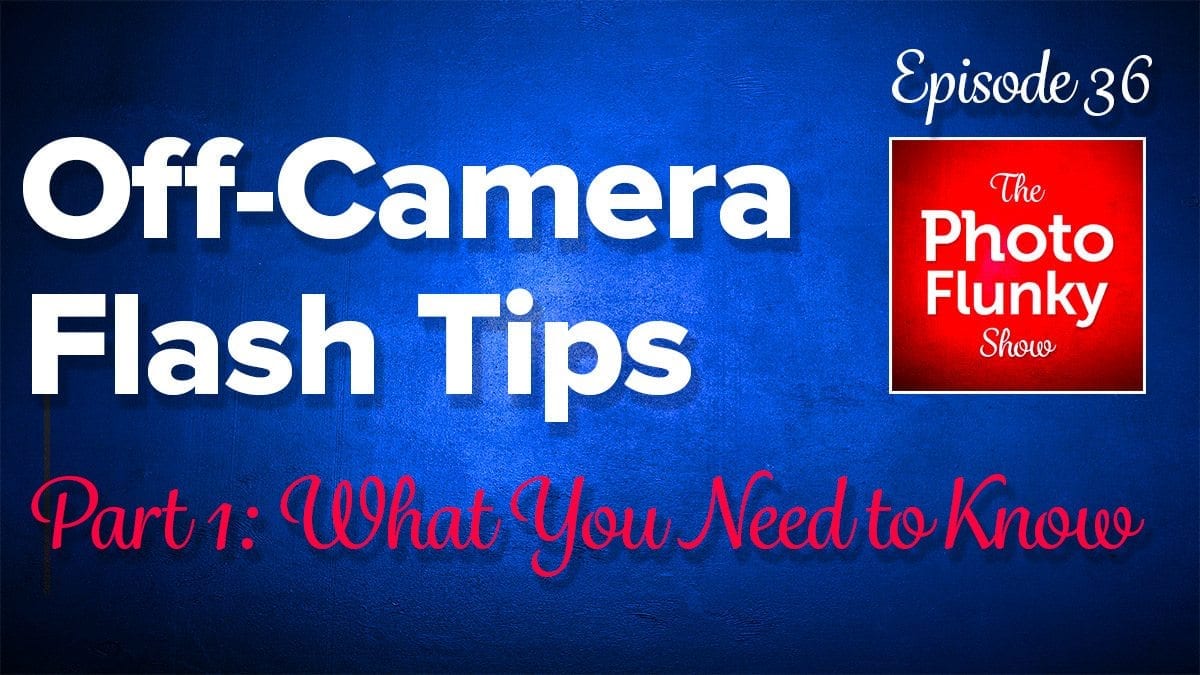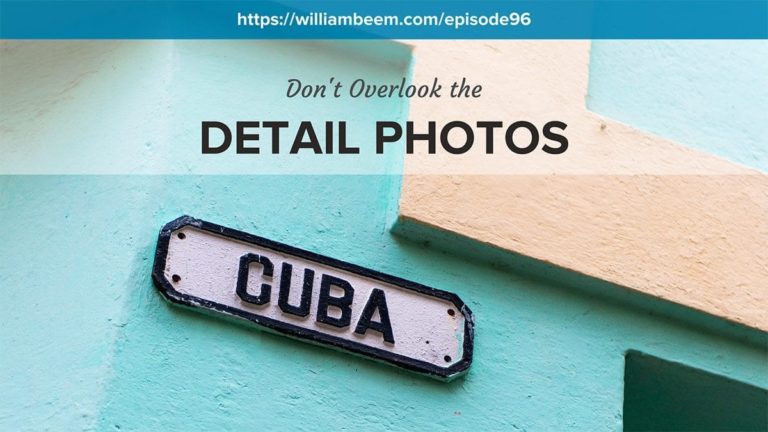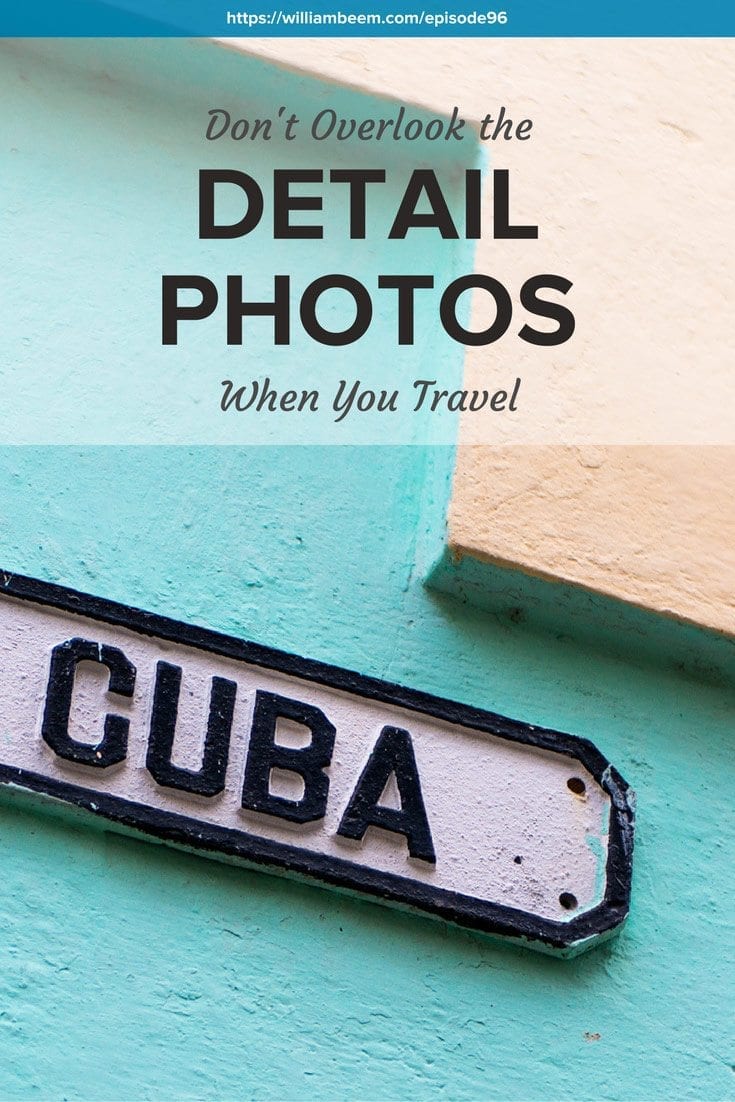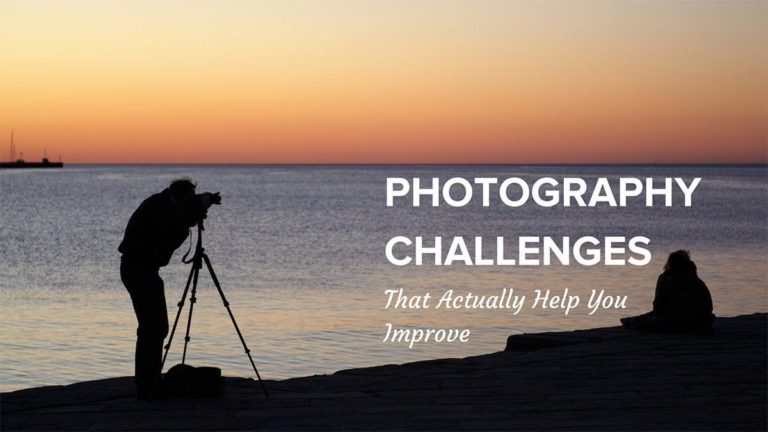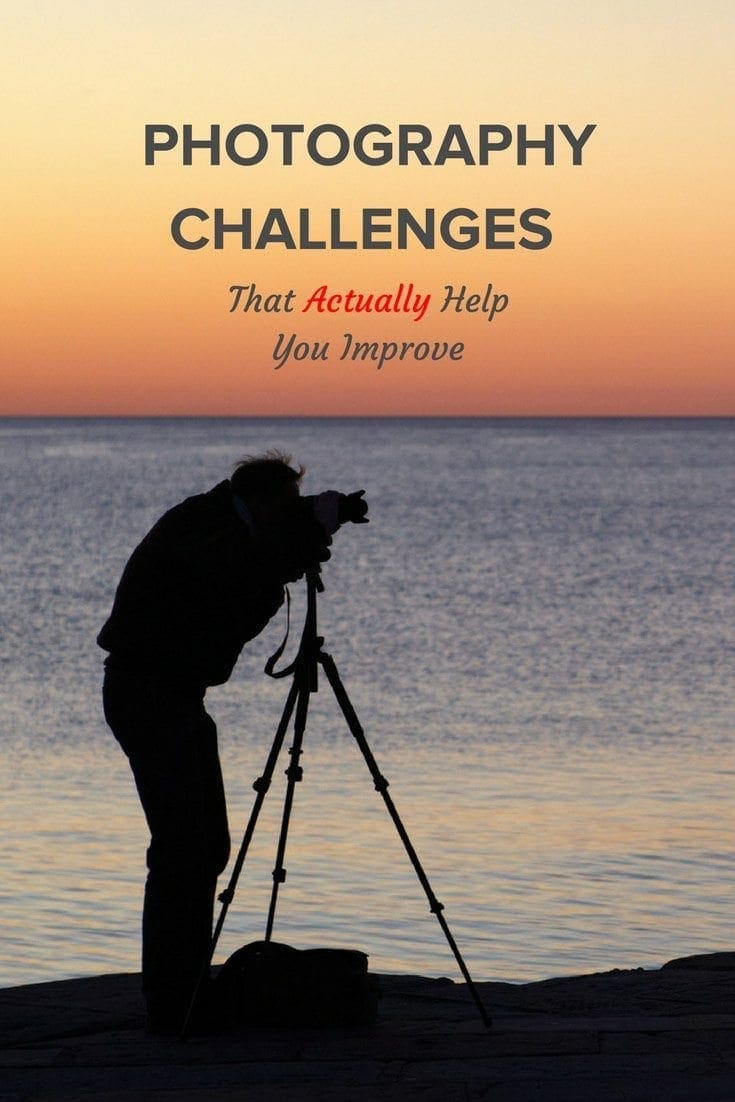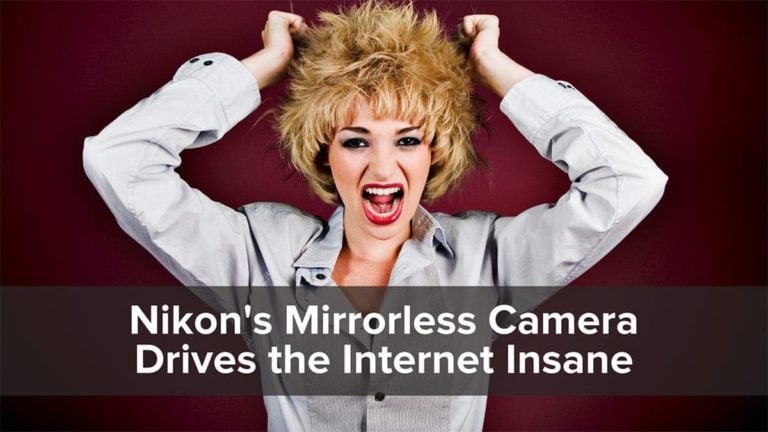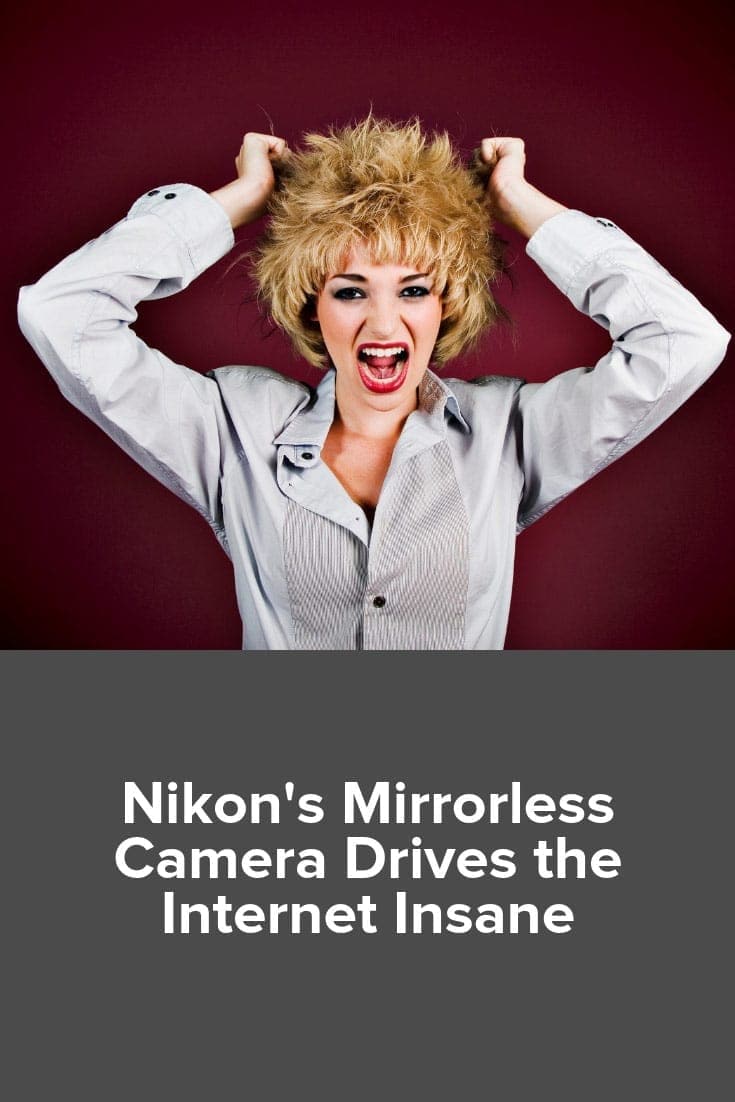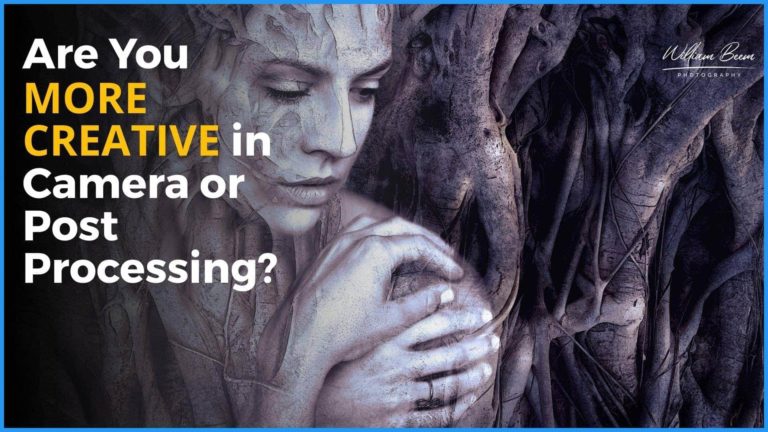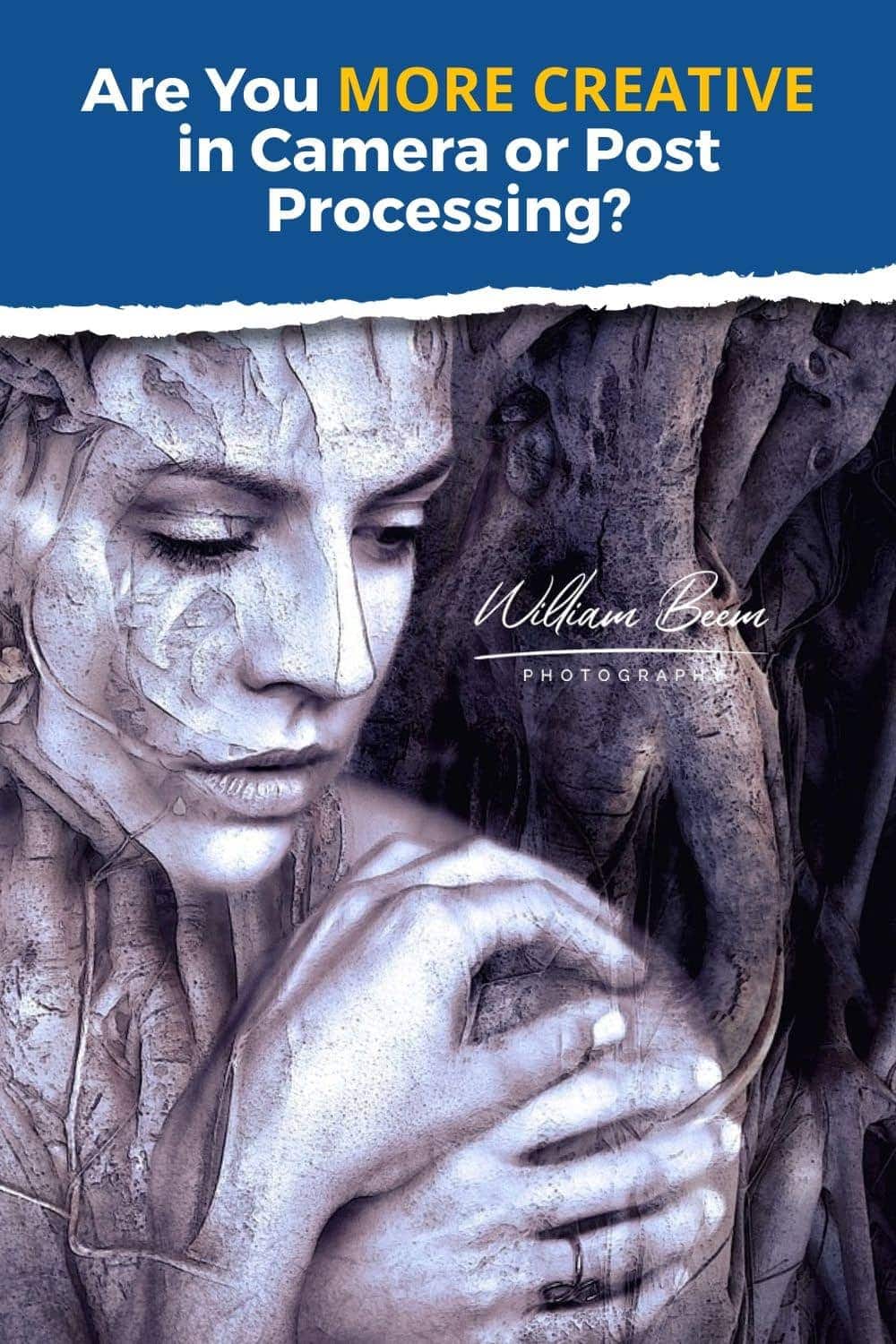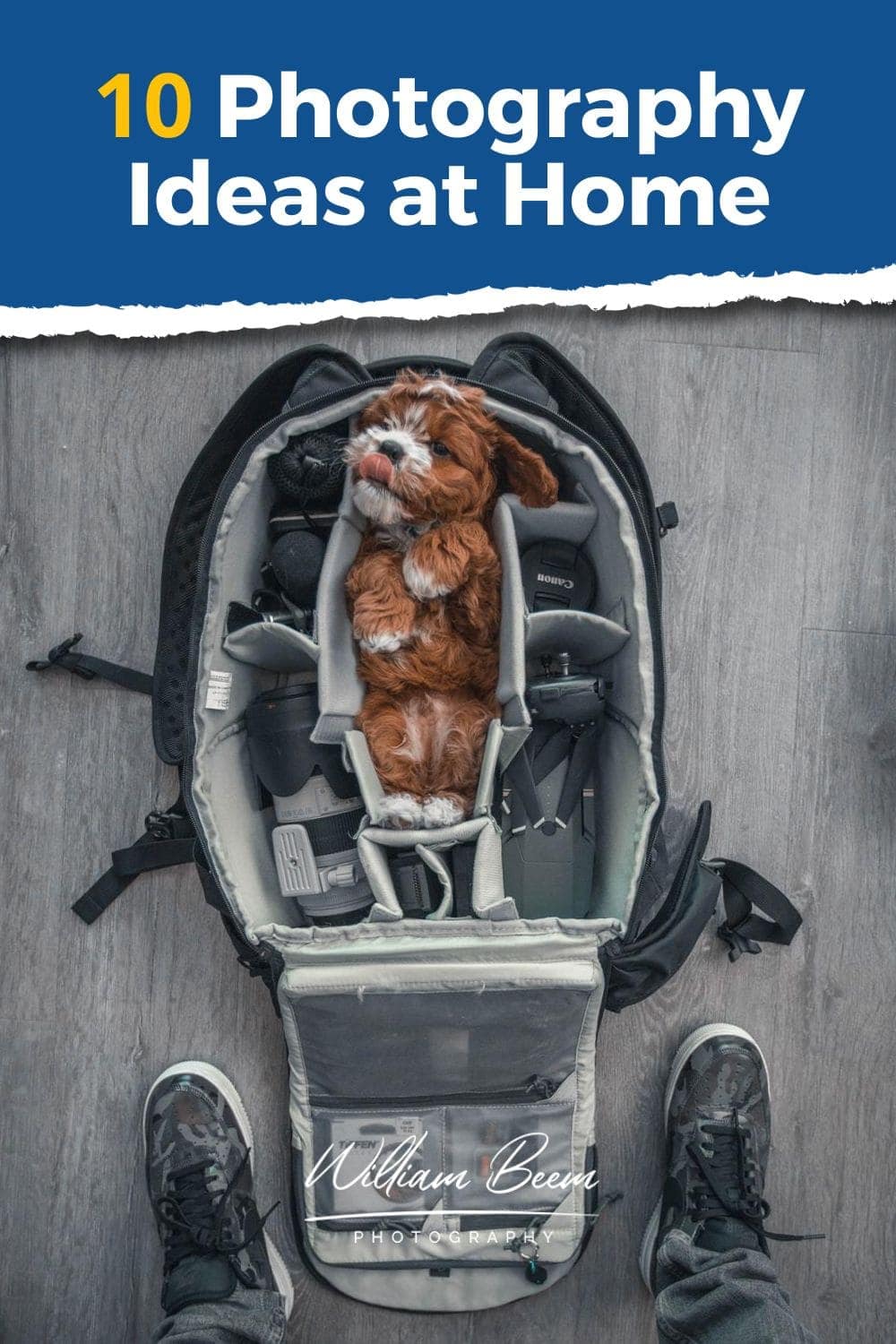Affiliate Disclosure: We earn a commission if you purchase through one of our links at no additional cost to you.
Off Camera Flash for Complete Beginners
Thank you for listening to The Photo Flunky Show. This episode is for anyone who wants to begin working with off camera flash. We discuss some basic concepts and differences between flash and strobe.
Off camera flash doesn’t have to be expensive, complicated or hard. Yet, you can make it all of those things if you dive in without some basic concepts that we discuss here.
My advice is to take it easy and slow. I’ll share tips that I’ve learned from other photographers and my own experience with lighting my subjects.
Related Links
Here are some of the products I mentioned on this episode. Please bear in mind that the Yongnuo flash products below are geared toward Nikon shooters. There are other versions for Canon, etc. Before you buy, please verify that you have the right version of the product for your camera equipment.
Lastolite LL LU2130 Brolly Grip with 35-Inch TriFold Umbrella for Speed LitesYongnuo RF-603NII-N1
Yongnuo YN565EXN-USA i-TTL Speedlite Flash for Nikon, GN58, US Warranty (Black)
Subscribe to The Photo Flunky Show
Thank you for listening to The Photo Flunky Show. Make sure you get every episode by subscribing.
iTunes – https://williambeem.com/itunes
Stitcher – https://williambeem.com/stitcher
Google Play – https://williambeem.com/googleplay
Blubrry – https://williambeem.com/blubrry
Social Media Links
We love seeing your photos and keeping in touch with you on social media. Here’s where you can find us.
Transcript
THE PHOTO FLUNKY SHOW: Episode 36
Hi, welcome to the Photo Flunky Show, Episode thirty-six.
On this show we’re going to start a series of shows about off camera lighting tips. This is part one. Welcome!
William: Hi, thanks for being here. We really appreciate you. My name is William Beem.
Lee: Hi, I’m Lee Beem.
William: And like I said we are going be talking about off camera lighting tips and this is really going to be a fundamental show. It’s going to be for beginners. If you’ve never done off camera lighting before, we’re going to go over some of the basic concepts and things that you need and why you actually want to do it in the first place. Show notes are going to be available at williambeem.com/episode36
You can find a transcript of the show there for free, and of course there are links to subscribe at photoflunky.com if you want to subscribe to us on iTunes, Google Play Music or Stitcher Radio. We would really love to have you!
Alright Lee, are you ready? Because I know this is one of your favorite topics.
Lee: Yeah I know. It shows up my ignorance.
William: You don’t use any off camera lighting.
Lee: No.
William: Why is that?
Lee: It just seems like more hassle than it’s worth. I think learning how light works – available light – and how to control that kind of made sense to me. There was nothing really expensive about learning that.
I have got a flash. I think it’s broken now! It’s something equivalent of an SB600, maybe? I don’t recall. I enjoyed using that, but I found I never liked to use it without a huge diffuser on it, otherwise it was just always too harsh.
I just found that it gets very complex and complicated. I don’t want to do math to take a photo.
William: Alright, I understand that. You are right. You are going to put that SB600 or any other flash on top of your camera and shoot it directly at your subject. It is going to be bright and it’s going to be harsh and it’s probably the least flattering light that you can put on any subject.
Lee: Yeah.
William: OK, so let’s get started with some of the reasons why you want to get your light off the camera and as you mentioned, it is just an ugly light. It is direct, right in-your-face light. It’s good enough to document somebody.
In other words you’re throwing light at a subject just so you can say “This is an object. This is a person.” It’s not really artistic; it is simply there to document your subject.
When you get your light off the camera and you start working with different angles of lighting on your subject, then you start getting to a point where you have a bit more creative control over how it is going to look.
The other reason that you really want to get your light off the camera is it’s reliable. You can’t always depend upon the sun or other light sources that are just ambient light being consistent any time you want, 24/7.
Lee: No, you can’t, but at least it is uncomplicated for me.
William: It is uncomplicated, but it also means that if you want to have nice soft side light, you either have to wake up in the morning for sunrise and be ready to shoot when it’s the perfect light, or you’ve got to be ready at sunset if you want it coming from the other direction.
Lee: Yeah, that’s true.
William: If it’s high noon you know you’re going to have very harsh light coming down on your subject from directly above and that’s not necessarily the most flattering look for most situations.
Lee: Not usually, no. There are few exceptions.
William: So that’s why it really makes sense to start learning about off camera lighting. That way you’ve got control over the intensity of the light, the quality of the light, the direction of the light and the time that you want to use it.
Lee: OK. That makes sense to me.
William: In other words, it’s on demand lighting. It’s not like you have to wait for your TV show to come on at nine o’ clock on Tuesdays like you did in the old days. Now you’ve got a DVR and you can record it and watch it whenever you want. Well, if you’ve got your own lighting control, it’s on demand. So long as the batteries are charged or you’ve got electricity for whatever kind of light source you’re using, you can control what the light looks like and other factors that are going to be part of your overall lighting solution.
Lee: OK.
William: Let’s start off with the basics of what you need. Before we even get into off camera lighting, let’s start off with cameras that have a built in flash. The little pop up flash. What is that really good for?
Lee: I don’t know. I have tried it and there are times in a pinch where I’ve just needed … literally I have just used it as a get out of jail free card for a snapshot. As far as taking photos, it’s small; if you get close enough for it to be effective you’ve got that fine line between being close enough and then suddenly blowing everything out. I just found it very difficult to work with it.
And the other problem, which is a bigger problem, if you have a fair sized lens on your DSLR that pop up flash causes a lens shadow.
William: It does, because that pop up is always in the same place and if you’ve got a big, let’s say a 70-200 mm or larger lens out there, the light coming from the top of that flash on the top of your camera is going to be blocked by the lens that is extending a little bit too far.
Lee: Well, even the faithful little 18-105 mm which is the standard kit lens for the crop sensor Nikon bodies – I think even the entry level cameras, some of them, you can get a bundle with the 18-105 mm – that lens, if you get beyond 70 mm, or if you’ve even got the hood on you get a shadow cast by the flash. It’s just not high enough on the camera.
William: Yeah, so really all it’s going to be good for in terms of photography is maybe a little bit of fill flash. You might be out on a bright day and you just need a little bit of light to pop up on someone’s face. It might help you with that and it’s going to be weak, but since it’s a very small light source it’s going to be a very harsh light source. So you don’t really have much control. You can’t really put a soft box on your pop up flash. It’s just one of those things that’s there in a pinch to document.
The next step up that you’re going to have would be a small flash. In my case, because I’m a Nikon shooter, I’m going with Nikon SB900 as the older version and SB910, I think, is the current … actually no. The SB910 was recently deprecated. They have a new one now that has radio triggers, but it doesn’t really matter which flash you have or which brand you have.
There is a saying that Scott Kelby puts out when he teaches his lighting courses. If you take all of these lights, no matter which brand, which model, they all do the same thing. They put out a burst of white light. And what really matters is not the model that you have, but what you put in front of them.
Small flash is available to carry with you. It’s something you can stuff in your pocket or your camera bag and take it with you and then put it up on a stand someplace, or even hold it in your arm at arm’s length away. I’ve done that a number of times with a small umbrella holder that I’ve got and it makes some really nice close up portraits. But the idea of a small flash is it’s battery operated, it’s portable, you can take it with you and it gives you much more control and many more possibilities than you have with just the ambient light in the area or your pop up flash.
Lee: Yeah.
William: The next step up, you’re looking at studio strobes. This is a wide gamut of possibilities. It’s also going to be much more expensive. You can get anything from the Alien Bees, White Lightning, I use Elinchrom strobes and then Profoto strobes can be really expensive; they all still do the same thing and you’ve got to ask yourself, why are you buying a particular brand?
It’s not so much because of the light that they put out. You are going to be looking for other factors that you can use to manipulate your photography. So for example, some of them may have a faster recycle time. In other words, the time between when the flash pops and it recharges and then you can start taking your next photo.
Lee: So was that a consideration for you when you picked your brand?
William: Actually, the consideration for me when I picked Elinchrom was I really liked the light modifiers by Elinchrom. I mean, you can buy third party light modifiers and by that, I’m talking about soft boxes and beauty dishes and so forth. I liked it as a system.
It’s the same reason you might buy Nikon or Canon; there is a system of the camera body and lenses that go together and the flash that it has, but the same thing could be true of your flash system. Does it come with, or are there options to buy accessories as part of a system that will work well for you?
Lee: OK, I understand that now, when you explain it that way.
William: And there have been changes over the years, so for example, some of the Profoto flashes that are available now, not only will they work well off of battery packs, but they use TTL lighting. In other words, it’s registering with your camera through the lens, through the light metering and that will help it determine what power output of flash to make.
Now typically, that is the kind of thing that you’ve done with a branded small flash. In other words, if you’ve got a Canon flash or you’ve got a Nikon Flash, they work with your camera and your camera’s meter. You will read the amount of light on a subject and then as you’re taking photos, the light changes a little bit. If you are taking a photo of somebody in a black shirt, for example, you meter the person’s face and you meter the person’s shirt, you’re probably going to get a different reading.
Lee: Yes.
William: So what will happen is, through the lens (or TTL) is going to read that metering and adjust the output power of the flash to match what you’re metering on.
Lee: OK, so then how you are metering matters, whether it’s spot, or center weighted?
William: Exactly.
Lee: OK. Got it.
William: So we’re starting to get a little bit more complicated than I wanted to already, because we are going to talk about different types of metering, but the studio strobes, small flash … whether you choose one or the other, you’re looking for features beyond the fact that they are a light. You are looking at the flash duration. That’s going to be how short the duration of the flash is. It’s going to be much shorter than your shutter speed. In other words, if you want to get that nice, crisp image of something in motion, you want a short duration of flash.
And the recycle time. And example you might have seen of this is, let’s say that you’ve got a skier who is doing a jump in the air or maybe a motorcross – something with action like that – and you want to take photos showing the person at different stages across their journey, flying through the air.
Lee: OK.
William: You’re going to have to hit them with the flash. You’re going to have to hit them with a flash with a short duration and you’re going to have to hit them with a flash that recycles fast enough so that you can see them from spot to spot to spot.
Lee: In quick succession.
William: If it takes a second to recycle, well within a second’s time the person may be finished with their jump.
Lee: Probably back on earth, yeah.
William: Exactly, so those are the kinds of things that you consider when you’re buying a strobe or a flash and quite honestly, to have the kind of recycle time that we’re talking about, you’re looking at more expensive equipment to have that quick recycle time and that shorter duration.
Lee: So would it matter less with something studio than it would with something sport; action sports?
William: Exactly. When you’re working with a model, you don’t necessarily need to have something recycling within under a second’s time.
Lee: No, you can say, “Please be patient.”
William: Well, you don’t necessarily want your model to be patient, but you want to have a rhythm when you’re working with a model. So you might be every second; every two seconds. You want to have a rhythm and you want to know that your recycle time is going to work reliably like that. So that way your model knows he or she can strike a pose and then within a second or two seconds, whatever your rhythm is, strike the next post.
Then that way they can kind of go through their motions and they can work their magic in front of the camera and you can reliably capture them, so long as you know that you’ve got a recycle time that is pretty consistent.
Lee: OK, got it. That makes sense. I don’t do any model shoots. I never have. I probably never will.
William: That’s OK. That’s kind of where we’re talking about some of the concepts of why you want to work with off camera lighting.
One of the differences you’re going to find between small flash, which is typically battery operated, and studio strobes, which are typically on either electricity or some kind of really strong battery power, is that small flash is going to hit that battery and it’s going to start slowing down that recycle time as the battery wears down.
As the battery wears down, it can’t recharge and recycle as quickly and it slows down, so your rhythm starts kind of like an album that you used to play and the power went out there.
Lee: Gone!
William: But that’s kind of the idea. It doesn’t happen all at once like that, but it is going to slowly start slowing down. That’s the reason why people even buy add on battery packs for small flash so you can put more batteries in there and just keep the recycle time going and keep it fast so that you can shoot action sports out in the field some place.
So we’ve gone over some of those little things about small flash and studio strobes. The brand is not as important as the features that you’re looking for and we are going to go into those features much more in later podcasts as we start talking about some of the action that’s happening.
Other things you’re going to need are quite simply light stands. If you’re going to have your camera in hand and your flash is going to be off camera, then you need something to put it on. It’s literally that simple.
And that’s the nice thing. You can start putting your light in awkward places. By awkward places I’m talking about doing things with backlighting or under lighting or you can have direction lighting coming from above or the side. I’m trying to think of one of the examples when I was in St. Lucia on Joe McNally’s workshop, one of the photos that he did was out at a tiki bar.
The concept was it’s late in the evening, there are two ladies sharing a cocktail at the tiki bar and we used ten different flashes to put that scene together.
Three of them were behind the bar, so there was some backlighting. There were flashes underneath the bar because when you go into a bar there is light that is coming up from underneath the bar. There were lights on each of the models and those had to cross over each other so that they did not interfere. In other words you didn’t want to get a shadow of one model while it’s aiming at the other one.
So you’ve got to kind of position them so that your light is going there. There were a little bit more on the bottom part where the floor was because you didn’t want everything just to fall off into pitch black.
The fact that he had access to that many lights and he could choose exactly where he was lighting things … he had some of the bottles that were on the bar with a backlight to them and it just added more interest and more intrigue. It looked kind of like what you would expect it to look like, except for the fact that without those flashes, it just never would have looked that way.
You expect these things because you’ve seen them in magazine ads, you’ve seen them in commercials. Well, all those are meticulously lit as well.
Lee: You never really think about that, do you?
William: You really don’t.
You know, you go out and you just order your cocktail and you’re having a nice time. But if you’re trying to take a photograph of people having a nice time having a cocktail, you’re going to have to light a lot of different little areas.
That was kind of the lesson that he came up with; we had control of the light. Some of those were on light stands. Some of those were just people standing there holding the light because we ran out of light stands.
Lee: So use a person!
William: That’s what they call a person holding a light for somebody: voice activated lightstand. “Move a little to the left.”
Lee: That works. I can do that.
William: The next thing you’re going to need are light modifiers. Light modifiers are anything that shapes the light or controls the way it happens. That could be your soft box that is diffusing it, it could be as simple as putting a piece of tape on the side so the light doesn’t go to the left, it could be gels that color the light; anything that changes the light that’s coming out of the flash is your light modifier.
Alright, so let’s talk a little bit about how off camera lighting works.
Alright, you’re familiar with the exposure triangle, right?
Lee: Yes.
William: So you know that you’re going to have your ISO, which is your sensitivity to light, you’re going to have your aperture, which is how much light is coming in and hitting the sensor, and then your shutter speed, which is going to dictate how long the shutter is open to allow the light to come in.
Lee: That’s right. OK.
William: When you start dealing with flash …
Lee: It screws it all up.
William: Well, you add two more elements. So instead of a triangle, now you’ve got a pentagon.
Lee: That just kind of messes with me, because you get told all about this exposure triangle. “It’s all you need to know.”
William: It is. Until you start working with off camera flash. But it’s not as difficult as it may sound.
You’re going to add two more elements. One is going to be flash power. In other words, how much light are you putting out of the flash?
The other one is flash distance. How far away is the flash from your subject?
Lee: I get that. I mean, I know about that, but that was the point where I went, OK now I’ve got to do math, because I’ve got to be calculating. I need to be able to measure distance, at least approximately and I need a way to know how much the power output is. I cannot guess distance. I need to measure it.
William: Well, there are a couple of different things you can do. One is you can have a flash meter that will do the math for you. Or you can eyeball it.
Lee: Yeah, that doesn’t work. For me.
William: It doesn’t … actually it can, but you have to do it in stages if you’re going to eyeball it.
The first thing you’re going to do is ignore your flashes, set up your camera and take a photo of the scene so that you get the ambient light part the way you want it.
So in other words, let’s go back to that little tiki bar that I was talking about.
Let’s imagine that this is during the day. You see the ocean behind the bar and blue sky is back there. You want to make sure that’s not blown out.
Lee: Absolutely.
William: So you’re going to expose for that, so it’s clear. And that means that the people that are under the shade, the bar and the bottles and all that stuff are going to be dark.
Lee: Yes, that makes sense.
William: Now you start to add your light.
Lee: OK, so you light the things that didn’t light?
William: Exactly. And you light them up one at a time and you start adding light. It’s easier to add it one at a time, see how it looks, then add another one and see how that looks. Each time you’re adding it, you’re going to say you want to have your flash out of the photo so that’s going to affect your distance. So you want to get it as close as you can without being in your photo.
Lee: OK.
William: So that determines your distance right there.
Lee: So your people need to be really patient, right?
William: Well, if you’re going to be doing a shot like that, I mean that was a very complicated shot that he [Joe] set up with ten different flashes and yeah, you’re going to have to be very patient because if you’re looking for that level of quality and control, it takes time to set up. It’s not like you just walk up, say “Oh, there’s a castle!” Snap and walk on.
Lee: It would take me a lot longer than it would take you to set it up, so I’d probably be better not doing it with people.
William: But in a case like this, when you start working with off camera lighting yes, you are going to take more time to set it up. Not every one is going to be as complicated as what I described with the tiki bar.
You kind of go step by step and you build the light up. You start with what exists and then you add where you need it.
Lee: OK, that makes more sense.
William: As far as your distance, you get as close as you can without having the light in the camera. And sometimes maybe you cheat a bit. Sometimes the flash is within the frame, but it’s hidden behind something. The lights underneath the bar were hidden by the top of the bar. The bar tender area is beneath so you may have some down there to light the scene above.
The backlight – there was a post back there that had some little glass thing and some bottles, so there were three lights that were behind that and they were shining up into the light. You couldn’t see them to look in there, but they were still within the frame.
So basically you’re hiding your light, getting as close to your subject as you can.
Lee: OK, so they were radiating light without the light source being seen.
William: So once you’ve got the flash distance set there, then you worry about the power. How strong is it? Is it too strong? Is it too weak? And you just simply vary the power for the one that you’re setting up at the time and you can just look at it.
Now if you’re looking on the back of your little LCD screen, it’s hard to judge. This is the time where you really want to set up, have a laptop there and tether, because you can have a much better view of details like this when you tether to your laptop.
Lee: Hmm, the plot thickens. See? Now you’re needing a whole lot of stuff!
William: If you’re going to do something this complicated, yes. If you’re going to go out with a model and just have one light and a flash, no.
It depends upon how complex and how complicated you’re trying to be.
We can go in a completely different direction. I mentioned that I had that little handheld umbrella light. At the time that was just an SB800 Nikon flash on a handheld grip that had a cold port so I could slide the flash on there and lock it down and then there was an umbrella that was sticking out and it was about a thirty-six inch umbrella. I would hold that at arm’s length and then hold my camera with the other hand and sometimes I would do something crazy because I would cross my arms over so that my camera is on my left shoulder and I’m holding the light up with my left hand on the opposite side.
It looked convoluted, but it worked. I got nice, well lit portraits of the models with good, sharp, clear light in an environment that I couldn’t have shot before that. Sometimes I was using this for – usually indoors – sometimes in a bar, sometimes in a pool hall, depending upon what the location was where I was doing the shooting.
Lee: OK, so it can be simple.
William: It can be simple. And with some of the flashes that will do the through the lens metering I was talking about, they can do a lot of the math for you.
I tend not to rely upon that so much anymore. These days I like doing things in manual control, which means that I have control over all the variables because of what I said.
If you are using through the lens metering, it will change as it reads different things. I want my light to be consistent.
Lee: That makes sense to me, but it brings us back; if you want to have control it’s going to be more complicated.
William: It is, but it’s not something that you can’t overcome. A lot of people have learned lighting. It is something that’s going to take a bit of practice. You can end up buying a lot of gear and spending a lot of money, but you don’t have to. You can make beautiful portraits with nothing more than a flash on a stick and an umbrella.
Lee: That sounds like my style!
William: And that’s my recommendation. Start small.
There are a lot of different types of light modifiers out there. Don’t go off and buy a whole bunch of stuff. Start with an umbrella. It’s not the most versatile thing out there, but it’s quick and easy and you’ll learn the concepts very quickly with an umbrella. And it’s cheap! You can get an umbrella for a very low price, whereas if you start going off and buying some of these soft boxes, they could be $200-$300 or more, depending on the size that you get. But you can get a seven foot umbrella for $99 and that will give you just a beautiful quality of light; probably better than some of the soft boxes that I bought for my Elinchrom strobes.
Lee: Really?
William: Oh, absolutely, because the soft light is coming from a large source.
Lee: OK, that I do know. That’s the one thing I learned.
William: The larger your source of light, the softer it is; particularly as you get closer to your subject, it’s softer light. So you can do that with an umbrella.
A handheld thing, the nice part about that, rather than setting it upon a light stand if you’re outdoors and you’ve got an umbrella on a light stand, almost every photographer’s experience is a gust of wind will come along and blow it over and it attacks your model.
Lee: Or destroys your chocolate brownie!
William: Exactly. It depends on what you’re shooting, but an umbrella is a very inexpensive and easy way to start. And you don’t have to start with an expensive flash like I’ve been talking about. There are some really cheap flashes that work with inexpensive triggers and those you have to use in manual mode. They won’t work with some of the more complicated things like through the lens metering that I was talking about.
I would start off, if you really want to learn flash, I would start off with something inexpensive. I think Yongnuo is a Chinese brand and it comes with simple little triggers that you can put one on your camera and one on your flash and it will give you a little burst of light.
If you want to change it, you’ve got to take some steps back and forth between your flash and where you’re standing to make the changes. You pay more for conveniences.
On my trigger for my Elinchrom there is a little button on top of the antenna that goes on top of my camera. I just push some buttons and the power goes up or down. I don’t have to go over to the light. I don’t have to go bring it down and change it.
So cheaper lights have fewer frills.
Lee: Well mine was a cheap, basic light. It had manual settings, it had automatic settings and I never really messed with it. I just left it as it was and stuck my huge, ridiculous looking diffuser, which was about five times the size of the camera, over the top. It worked quite nicely, but the only other way to use it was to bounce it off the ceiling or a wall at the side, depending where you wanted the light to come from.
It worked fine, but it cost me a fraction of the price of a Nikon equivalent.
William: Well, yeah. The Nikon is a very sophisticated flash.
Lee: This was not!
William: If you really don’t know what you’re going to do with it or if you’re not sure that you’re going to continue using it to grow into all the capabilities it has, I wouldn’t buy one.
I wouldn’t recommend getting something if you’re not convinced that you’re going to use it. If you want to dabble in this, I’d get something small and cheap and yes, it may not be the one that you ultimately stay with, but if you’re not sure you don’t want to drop a whole bunch of money into something.
Lee: Well, that’s why I got a cheap one. I figured that … I was actually quite certain at the time that I bought it that I was going to learn to use it and going to want the Nikon one. But I got it in the meantime to see how I got along with it and I don’t feel like I ever justified buying it by using it enough to justify upgrading. Does that make any sense?
William: Of course it does. And it’s what you know and what you want to shoot and how much experience you’re going to build going off and doing it.
One thing you need to make sure you keep in mind when you’re going to start working with off camera lighting is there has to be a way to trigger the light when you get it off your camera. The most basic thing is to get a cable that runs from the hotshoe on your camera to the light.
It kind of limits your range a little bit. The cable is only going to be about, maybe six feet or so; maybe they’ve got something a little longer, but it’s awkward. It’s cumbersome to have it on there, but it is the most basic and inexpensive way to trigger a light.
Lee: I think roughly six feet is going to be adequate for most things, if you are keeping it simple. I mean, if are in a room in a studio …
William: It is. I mean if you’re doing food photography, a cable is fine because your food is not going to be running away from you.
Lee: It had better not!
William: If you want to capture motorcyclists or a horse race of bicyclists or something like that; or maybe even just someone running and you want to put your light on the opposite side of the track from where you’re shooting and shoot at them so you can kind of freeze the motion, you’re not going to have a cable strung across the track.
Lee: Give them hurdles.
William: You know, that’s just not going to work! So the cable has got to be useful within the range of where you are and not interfere with your subject in any way.
So, yeah, no cables in front of subjects because they just …
Lee: Don’t like them.
William: No, I can assure you, any athlete who trips over a photographer or his or her cable is not going to be a happy athlete!
Lee: Probably not, no.
William: Other things you can look at: Nikon has something called CLS, I think. Creative Lighting System. Basically that is an optical trigger. The little pop up flash that we were talking about on your camera can work on some of the Nikon cameras. It pops up and instead of lighting your subject, it sends signals to the flash and says you’re going to fire in Group A and you’re going to fire at this power.
Lee: Oh dear, I remember you used this thing in the living room one day when we set it up.
William: I did.
Lee: I just did whatever you said. You’re going, “You got it?”
“Yeah, just tell me what to do.”
I had no idea!
William: But this is where some of the power comes in with off camera flash. You can have different flashes that belong to different groups and then you can change the power of the flash.
Lee: Remember what I said to you? You probably don’t remember. I said, “Don’t try and complicate things by explaining. Just tell me what you need me to do.”
It’s that simple.
William: Well, here’s what that means. When you have different groups with different power you’re going to have a main light on your subject. But that may not light up everything you need. You may need a backlight to light the hair, or you may need some fill light on the opposite side, so it doesn’t have to be as bright as your main light, but you don’t want it falling off in a harsh shadow.
So maybe you could use a bounce board. If the bounce board is not doing it or it’s not practical to use a bounce board, then you’re going to put another light there.
Like clamshell lighting is up above and underneath at different power.
That’s what the groups on the flash will let you do. And Nikon’s system with an optical trigger will let you do that, so long as your flash and your camera are within line of sight with each other.
The next things you start looking at are radio triggers and these can be very inexpensive or they can get expensive to something like Pocket Wizards, which are extremely reliable. They are used by professionals all the time, but they are not the most inexpensive triggers out there.
The nice thing about radio triggers is you no longer have to worry about line of sight. So if you want to hide a flash behind a wall someplace and still have it trigger, you need a radio.
Lee: So it still reads the signal.
William: Exactly. And you’ve seen me do this in our living room as well. When we put up those big white V-flats. I put the lights behind them so they are out of sight, but they still trigger when I say so.
That is the fun of how it works, at least at a very basic level.
In the future we’ll give you a little bit more discussion about how to use direction of light and quality of light, but right now I want to talk about a couple of what if things.
What if you walk into a room and the lighting that you have just isn’t enough to light the subject that you have?
Lee: Uh, you’re asking me for an intelligent answer?
William: No, no. It’s not a matter of intelligence. This is a matter of experience, but it’s really … look around you at the walls. One of the things you learn about light is light travels in a straight line, but it also bounces and you can kind of predict the angle that it’s going to bounce based upon…
Lee: The angle that it hits the surface.
William: Exactly. So if you’ve got nice white walls, then you’ve got a nice, large surface that can bounce the light back at your subject and give you very soft, flattering light.
Lee: Or a ceiling, sometimes.
William: Yes, but then that means your light is coming from above.
Lee: Yes, well it depends what you want, but there have been times when I couldn’t get it from where I wanted it, but above was the next … the lesser of the two evils and it was just better than what I had. It was the best I could do.
William: Oh, absolutely. And the nice part about it is, if you’re going to be bouncing off the ceiling, again, you’ve got a much larger source. So even though it’s directly above, it’s going to be a softer source coming back at you.
Lee: Well, actually I had the flash angled. I don’t think I’ve ever done it from directly above, like straight up. I’ve always had it as far to the side as possible so it came down at an angle. It was just the best I could do.
If the walls aren’t white, you’re kind of screwed.
William: A little bit. I’ve seen people that have done this. I mean, a friend of mine got hired to photograph airplanes and they went in there with their lights and they looked and thought, that’s bigger than we expected it would be. How are we going to do this?
Well, they turned the lights up against the walls and started bouncing it off the walls to light the plane the way they wanted to.
The other thing you need to do sometimes is match your lighting with the available lighting.
So you can walk into some rooms and you’ll notice that they have a color cast. They can be very yellow; they may be very blue. Well, if you go in there and you throw your big burst of white light in there, it’s just not going to fit and people are going to say, “Oh yeah, you definitely had a flash here.”
It doesn’t seem like a realistic scene. So that’s when you start putting on gels. Gels are just little clear pieces almost like color – it’s not quite tape – but little clear plastic pieces you put over your light to modify the color of the light that you are omitting.
And that’s kind of one of the lessons that you learn is, light will take on the characteristics of anything that it hits. So if you bounce your light at a green wall, it will come back on your subject as green light.
Finally, something else that you want to keep in mind is light goes everywhere. So sometimes you don’t necessarily want it to go in all the places that you’re talking about. You learn about masks, barn doors, grids and cookies.
Lee: Cookies!
William: So what are we talking about? We are talking about things that literally block the light, but depending on how they do it is where it gets its name.
A mask is something that will block excess light from traveling in a certain direction. So for example, if you’ve ever held your hand up to block a light to eliminate the glare on something, let’s say you’re taking a picture of a menu or something glossy on the table. You hold your hand up to block the light; your hand is a mask.
Lee: See, I didn’t know this until you told me.
William: That’s OK. Now you know.
Lee: OK.
William: Your hand is a mask.
And you can make a mask out of anything, you can buy masks if you want to spend the money on them. I don’t necessarily know that you need to.
Lee: I come with two hands.
William: Yeah, but sometimes you need a bigger mask. So that’s why we’ve got those little foam boards so sometimes it’s just to block the light off.
Lee: I’m just kidding.
William: She’s messing with me.
Barn doors are something that goes on the light specifically and it’s kind of like left, right and top and bottom. They can open up wide or you can close them down. So for example, if you don’t want the light going to the left of your strobe, then you put a barn door on the left and maybe open up the other ones. So you can close off the area.
Lee: You can contain it.
William: Another thing that you can put on your flash itself would be a grid. These come in degrees.
Basically a grid is a very tight kind of grid and the light can go through it, but it can’t go side to side. Now how much light goes through it depends upon the degree of the grid. So you can have a twenty degree grid, a thirty degree grid and it will end up making a spotlight almost, out of your light. It won’t be going to the left, right, top of bottom, but the area that it travels to will grow wider as it travels farther.
Lee: Ah, so the distance then starts to matter.
William: Exactly.
And finally, cookies are things that you put in front of the light to elicit a pattern. Take a piece of plywood, cut some holes in it and the light only goes through those holes. It might give you a funky looking pattern up against the wall.
But a cookie doesn’t necessarily have to be a piece of plywood. It can be anything that you put in front of the light that elicits a pattern against the wall.
Lee: So you could use one from card with holes punched out?
William: You could put a colander in front of your light if you want to. It’s almost like a grid, but it’s something that elicits a different pattern of light that is escaping through.
Does that make any sense?
Lee: Yeah, kind of. I’d need to see this in action. It’s just that fascinates me. So is it going to make patterns on it?
William: Yes. So you’ll have that maybe off to the side, making patterns on the background and since it’s coming from the side the patterns on the opposite side will seem to be a little bit larger than the ones on the side where you’ve got the light.
Lee: You don’t’ want the patterns on your subject. So you’ve got to position it right.
William: You don’t want patterns on your subject. So basically, you’ll put the cookie off to the side, light the background, make the pattern there and then you’ll have a separate light for your subject. And the idea of the patterns is to have some interesting colors and light behind them.
Lee: So almost like texture would play a part in a picture, you’ve got your patterns?
William: That’s right.
So all the fun little tricks that you will play with light, just allowing some of it though and blocking some of it.
Lee: Alright, he didn’t explain this to me first so I am genuinely surprised. I’m not pretending to be dumb.
William: I don’t look at this as a matter of being dumb. It’s just some people are very intimidated by the idea of getting started with off camera light because there are so many things you can do. I understand that intimidation, but you really do want to start with some of the basics. Once you’ve done that, then you expand and go to the more advanced things.
So that’s why right here we are talking about possibilities, but what I really want to say is there are reasons why you want to get your light off the camera. That is so you have more control and you can take photos when and where you want to.
You don’t need a lot of equipment to get started. You need a flash, you need a way to trigger it and a light modifier to start with is just a simple umbrella.
You may need a light stand if you’re going to put it side to side. You may want to get a grip to hold it, but you don’t need to go off and spend a lot of money to get started.
But once you’ve got that, then you start learning the elements of how flash changes your exposure and that’s the flash power and flash distance.
Lee: OK.
William: Next week we’re going to start talking about some of the light modifiers you can use, we’re going to talk about direction of light and we’re going to talk about quality of light and how you can modify some of that.
So I hope this was useful to you. I hope you enjoyed it and we’ll look forward to talking to you again next week.
William: Thank you for listening to the Photo Flunky Show, episode number thirty-six. As I mentioned at the beginning, you can find show notes available at williambeem.com/episode36
There’s a transcript of the show there for free and of course, we’re going to have some links for you to subscribe on iTunes, Google Play Music and Stitcher Radio. You can also listen to this and other shows at photoflunky.com
We really appreciate you listening. Have a good week. We’ll talk to you again next week when we finish up on light modifiers.

